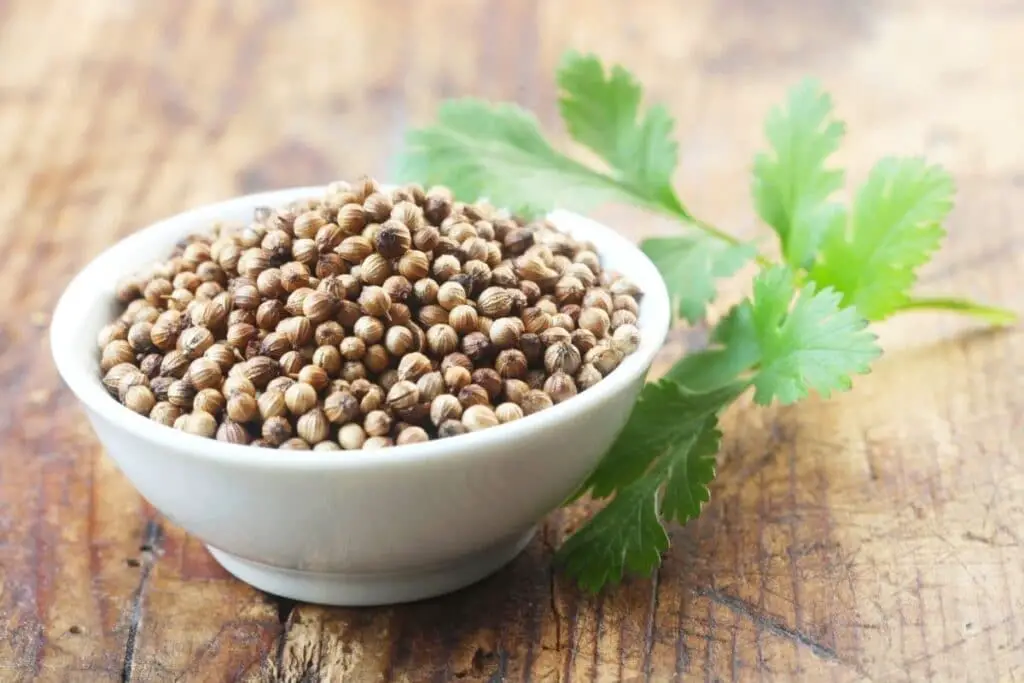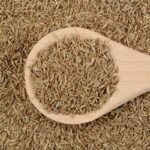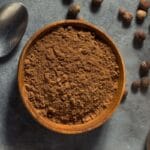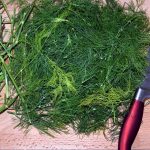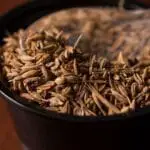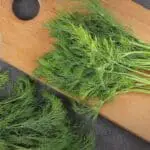Key points:
- For coriander leaves, options like fresh parsley, tarragon, oregano, Thai basil, and dill can be substituted in different dishes.
- For coriander seeds, options like cumin, caraway, fennel seeds, cloves, curry powder, and garam masala can provide similar flavors and aromatic qualities.
- Consider desired flavors and characteristics when choosing a substitute, and experiment to enhance your dishes.
This wonderful small plant can be used as a herb or a spice. With its leaves, roots, and seeds all edible, it is versatile in almost any savory application. Regardless of how you plan to incorporate it into your dish, it is bound to add flavor that packs a punch.
However, the fresh leaves don’t stay fresh very long, and pre-ground seeds can quickly lose intensity. If you’re all out of flavorful seeds or fresh coriander, we’ve got a list of vibrant alternatives that will spruce up your dish all the same.
When choosing the best coriander substitute, consider what properties of the spice you need in your dish and choose a replacement that closely matches those characteristics.
What Is Coriander?
Coriander is part of the parsley family together with cumin and caraway. While the seeds are generally referred to as coriander seeds, the leaves go by different names, including fresh coriander, coriander leaves, dhania, Chinese parsley. In Northern America, it is referred to as cilantro.
The coriander leaves and the seeds don’t have the same taste, so if you don’t like one, don’t disregard the other before tasting it. The seeds have a citrus undertone, bringing an earthy, nutty warmth to dishes.
On the other hand, the leaves have the most pungent taste when fresh and lose their intensity when exposed to heat. They have a strong tart and citrus-like flavor with floral notes. Many people perceive them to taste a little like dish soap.
How are Coriander Leaves Used?
The fresh herbs are often used as a garnish for fish, meat, soup, rice, or curry dishes. Many chutneys, salad, guacamole, and salsa also include the leaves. Central Asian recipes use the leaves cooked in large amounts until the flavor becomes much milder.
How are Coriander Seeds Used?
The seeds are used as a spice and even eaten as a roasted snack in India. They lose their flavor quickly once ground and stored. It is best to lightly toast them to release the aromatic oils and then grind them yourself just before using them.
Used in different ways worldwide, the seeds (whole or in ground form) are popular in curry, pickling vegetables, sausage seasonings, meat rubs, stews, beer brewing, and they are even used to flavor gin.
Best Coriander Substitutes
Best Substitutes for Coriander Leaves
1. Fresh Parsley
Flat-leaf parsley doesn’t look too different from fresh cilantro leaves, making it a good substitute when used as a garnish or in a fresh herb mixture. Parsley is usually easy to find or even grow yourself. It is a vibrant and flavorful herb with bitter undertones. It lacks the lemony tang of fresh cilantro, but you can always add a few drops of lemon juice to mimic desired flavor.
If you are not a fan of the soapy taste of cilantro, this is a great alternative option. Use it as a substitute for fresh coriander leaves in any dish in equal quantities.
See More: Parsley Substitutes
2. Tarragon
Tarragon is popular in French cuisine. It is not quite the same in shape or flavor but can still bring a vibrant pop of herbal flavor to your dish. It has lemon and licorice notes with hints of pepper and mint. Its complex flavor can easily change the profile of your dish, so start with a small amount and add to taste.
Tarragon pairs well with fish, chicken, and egg dishes. It can also be mixed into salad greens, dressings, pesto, sauces, and roasted vegetables.
See more: Tarragon substitute
3. Oregano
Oregano is a herb you’ll most likely recognize for its use in pizza and pasta sauces. It features an earthy flavor with mint undertones. Although this is somewhat different from coriander, it adds great herbal savoriness to sauces, dressings, and especially tomato-centric recipes.
For extra flavor in stews and soups, you can use the dried leaves as well. Since this is an Italian herb, it is not the best choice for a curry substitute.
4. Thai Basil
Thai basil is somewhat different from Italian basil in that it has a spicier and slightly bitter taste with licorice undertones. This herb has a closer taste-resemblance to cilantro than sweeter Italian basil.
The addition of Thai basil will bring a different flavor profile to your dish, but it won’t be overwhelming. It is versatile for use in salads, dressing, sauces, as a garnish, with chicken recipes and rice dishes.
5. Dill
Dill is a superb replacement in chicken and fish dishes, as well as mixing into yogurt sauces and salsa. It has a licorice flavor with hints of citrus and grass. Chop dill finely when adding into sauces, soups, dressings, and condiments. Start with a small amount and add to taste since the flavor can be strong.
Related: Replacement for dill weed
Best Coriander Seed Substitutes
1. Cumin
Cumin and coriander are often used together in cooking. This makes it one of the best substitutes you can use and the fact that the two spices are relatives with the same aromatic oils. Both spices have rich and earthy flavors. However, cumin is more potent.
Note that replacing it in equal amounts may yield a slightly stronger spice flavor. However, it’s a great option in curry. Cumin is also an ideal substitute in Middle Eastern, Indian, and Latin American recipes and is easily available at most grocery stores.
Tip: Replace ground cumin for coriander powder and opt for cumin seeds to replace whole coriander seeds in your recipe. Alternatively, grind your own seeds at home if needed.
See More: Cumin Alternatives
2. Caraway
Caraway seeds are popularly used in Indian and Middle-Eastern spice blends. The seeds are also great in potato salad and bread, specifically rye. Even though caraway has an underlying anise flavor, its warm and earthy taste makes it an ideal substitute.
Related: Substitute for caraway seeds
3. Fennel Seeds
With their anise and licorice flavor, Fennel seeds add both texture and spice to a range of Indian, Middle-Eastern, and African recipes. The seeds should be lightly dry-toasted before using whole or grinding to release the natural oils and boost the flavor. This can also reduce bitterness.
Fennel seeds have comparable flavor undertones to coriander since they contain similar compounds, but they lack citrus notes and heat. Whole or ground, fennel seeds are delicious in stews, meat rubs, curries, dressings, pickles, and potato salad.
See More: Fennel Seed Replacements
4. Cloves
Cloves don’t look like coriander seeds, but they do have an intense aromatic quality and slight citrus notes. If you plan to use them, cloves are best ground into powder.
If you decide to use them whole, you need to remove them from your dish before serving since biting into a whole clove can obliterate your palette, and you won’t be able to taste much of your meal after that.
Clove is a powerful spice, so add it in small amounts (only half of the original amount) when using it as a replacement. It is a popular spice in both sweet and savory dishes, from Indian curry, pork roast, and mulled wine to baked holiday puddings, pickling, and Middle Eastern cuisine.
See More: Cloves Substitutes
5. Curry Powders
Curry powder is a blend of spices containing coriander and a mix of cumin, turmeric, cinnamon, and cayenne pepper. The blend ratios and various spice additions vary according to the brand or type of curry powder. Still, it is always a well-balanced combination of warm earthy tones and spicy aromatics.
It is best to use curry powder as a substitute only when coriander seeds are not the only spice in your dish since the blend brings a lot of other aromatics to the flavor party. It is an ideal option in Indian recipes, curries, and marinades but does not pair well with Mexican dishes.
Only use half the amount of curry powder when replacing ground coriander, and be prepared for a yellow transformation of color if the curry blend includes turmeric.
Tip: If your recipe calls for other spices in addition to coriander, skip adding them if they are already present in your curry powder blend. Adding the spice blend as well as additional individual spices of the same kind will throw off the ratio by doubling the spice quantities.
If, for example, your recipe calls for coriander and cumin and you use a curry powder blend instead, there is no need to add cumin to your dish since the curry powder already contains both spices and acts as a double substitute.
6. Garam Masala
Garam masala is most well known for its use in Indian curry and marinades. The blend of spices generally contains ground cumin, cinnamon, cloves, bay leaves, black pepper, coriander, and cardamon.
The blend is warm, earthy, and adds depth of flavor with some varieties containing nutmeg and star anise, bringing a touch of citrusy sweetness.
As with curry powder, it is best to avoid adding other spices initially since the blend is already a fully rounded mixture. Adding separate spices can throw off the balance.
Tip: Garam masala is best added towards the end of the cooking time. If there is turmeric in the blend, your dish will end up with a yellow tinge.
See More: Garam Masala Alternatives
FAQs
Ground coriander will have an intensified flavor. Replace the required amount of seeds with half to ¾ of the amount of powder. The amount may depend on whether the powder is freshly ground or has been stored for a while since the intensity will diminish with storage over time.
Coriander seeds and leaves have distinctly different flavors, so they cannot be used interchangeably. You are better off using herbs as a substitute for the leaves and spices as a substitute for the seeds.
No. Although turmeric is present in Indian spice blends such as garam masala curry powder, which can be used as a substitute, using it as a substitute on its own is not recommended.
Herbs and spices that taste most like coriander are cumin, caraway, curry powder, fennel, basil, dill, tarragon, and parsley. However, some people may perceive coriander as having a soapy taste.
Conclusion
The versatile coriander plant can offer bold, bright flavors and warm earthy tones depending on the part you use. From leaves to seeds and everything in between, its versatility makes it popular in cuisines worldwide.
When choosing a substitute, consider what flavors, texture, and characteristics you need to mimic and then choose a replacement accordingly that closely matches every aspect. If your replacement is missing a little citrus, add lime juice. To enhance a spicy flavor, a touch of chili powder or paprika will do the trick. Let your taste buds guide you and have fun cooking.
*image by MissesJones/depositphotos
